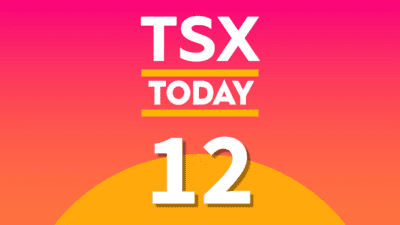Late last year, value stocks ran out of steam, as the rush to safe plays turned in a hurry. Undoubtedly, too much money chasing specific sectors can result in pockets of overvaluation. Now that value plays have also cooled off alongside their hyper-growth peers, I think patient Tax-Free Savings Account (TFSA) investors now have a chance to get into some of this market’s most reliable dividend payers at a nice discount.
Blue-chip dividend stocks like BCE (TSX:BCE) and Enbridge (TSX:ENB) are in the midst of climbing back from plunges endured in the second half of last year. Though it would be ideal to punch your ticket for your TFSA at prior months’ lows, I’m still enticed by the value proposition offered by each name right here.
BCE stock
BCE stock is a retiree staple that’s been uncharacteristically choppy in recent months. The stock slid around 22% from peak to trough, as investors weighed the risks of higher rates and a looming recession, which seemed unavoidable. More recently, BCE confirmed the fears of investors: high-interest rates will take a chunk out of this year’s earnings.
The reaction was quite undoubtedly negative on a rather upbeat week for markets. However, they came as no surprise. Remember, most of the second half of last year was spent considering the earnings decay to come. Currently, earnings are expected to slip by around 3-7%. If Canada’s recession proves mild, BCE could report a number in the lower end of the range, as it continues investing in 5G.
Ultimately, BCE stock has low expectations here and a high dividend yield, currently sitting at 6.3%. At 20.7 times trailing price to earnings (P/E), BCE stock is no steal. But if you value the high (and safe) yield, steady long-term dividend growth, and the low 0.46 beta (meaning shares should act less volatile than the TSX Index), I view BCE as a terrific TFSA addition.
Seldom is BCE stock cheap, because it just has one of the juiciest and most stable dividends out there. Combined with the lower beta, BCE stock stands out as a name to get you through a recession.
Enbridge stock
Enbridge is another Canadian dividend favourite that’s experienced bumps in the road of late. Thank in part to the energy patch, which heated up in 2022, Enbridge stock has been a source of gains and dividend growth again. Given the choppiness of the energy markets, I much prefer a pipeline firm with a huge payout than to a producer. At this juncture, Enbridge may be viewed as an energy firm with a pair of shocks to dampen out the volatile moves in the energy markets.
Despite the somewhat lower volatility (0.91 beta, which is just a tad less choppy than the TSX) versus top producers (many of which have a beta above one, meaning more volatile than the market averages), Enbridge stock hasn’t been immune to rapid pullbacks.
The stock is coming back from a nearly 16% drop. At 20.2 times trailing P/E, with a 6.56% dividend yield, Enbridge strikes me as another reasonably priced dividend juggernaut that’s ripe to buy for a TFSA.
Better buy: BCE or Enbridge stock?
Both stocks have similar P/E multiples (about 20 times) and secure dividend yields (6.3-6.6%). Enbridge tends to be, on average, a choppier ride than BCE. Still, I’d not be afraid of buying both for my TFSA.
If I had to choose one name, I’d have to go with Enbridge. The company kept its dividend “promise” through the toughest of industry environments. Further, demand for midstream services in a “higher for longer” energy world could make Enbridge a stock with greater upside potential.







